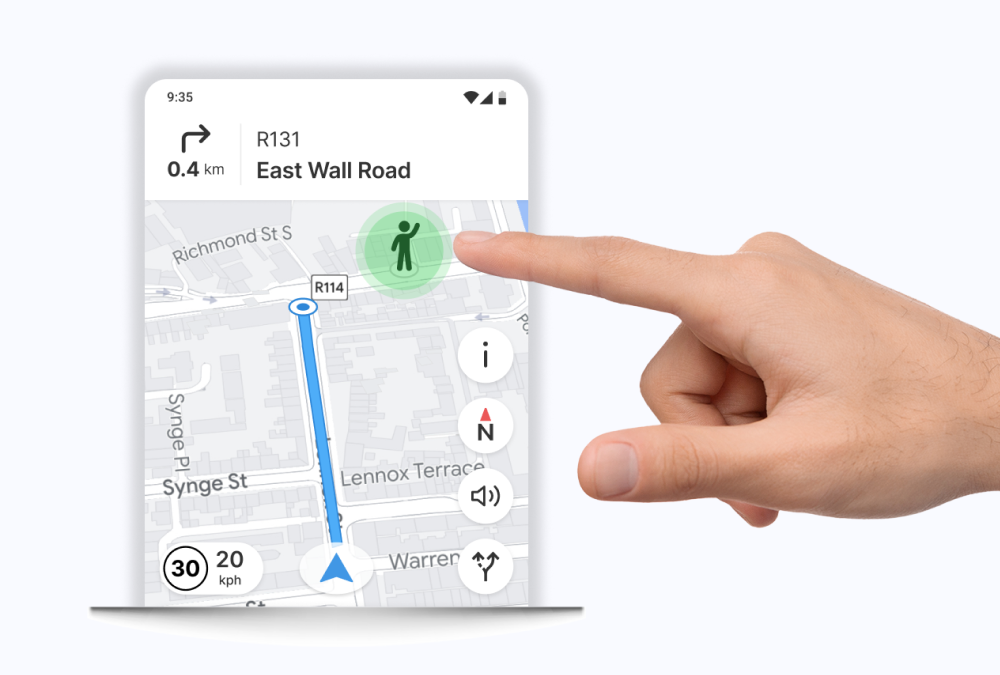Running a successful limo business in Canada requires more than just maintaining pristine vehicles and hiring professional drivers—it demands efficient systems that streamline operations from reservation to payment collection. Modern limo booking software transforms how limousine companies manage bookings, dispatch rides, track fleet performance, and deliver exceptional customer experience. Yet many operators feel overwhelmed by technology implementation, uncertain where to begin or how to maximize these powerful tools. This comprehensive guide walks you through each step of leveraging booking software to transform your limo service operations.
Understanding the Foundation: What Limo Booking Software Actually Does
Before diving into implementation steps, understanding what comprehensive limo software accomplishes helps clarify why this investment matters. Unlike basic spreadsheets or manual dispatch methods, modern limo reservation systems integrate multiple business functions into cohesive platforms accessible through cloud-based technology.
These software suites coordinate reservation management, fleet tracking, driver coordination through mobile apps, automated dispatching, payment processing via services like Stripe and merchant account integration, customer communication, and business analytics—all through intuitive interfaces that reduce training time while improving operational efficiency.
Core Functions of Modern Limo Software:
- Reservation Management: Capture limo bookings through booking sites, web portals, booking widgets, and passenger apps
- Dispatch Software: Coordinate drivers tracking, vehicle assignments, and real-time communication with dispatchers
- Fleet Management: Monitor vehicles, schedule maintenance, and track livery management requirements
- Payment Systems: Process contactless payments, handle Tap to Pay on Android, and manage limo invoicing
- Customer Tools: Provide passenger app access, booking forms, and mobile responsive booking experiences
- Analytics: Generate insights through analytics and dashboard reporting on business performance
Moreover, leading platforms like Speed Limo Software utilize cloud technology and systems like Kubernetes ensuring uptime with Kubernetes reliability that keeps businesses operational 24/7. This infrastructure matters particularly during emergencies when system failures could cost bookings and damage reputation.

Step 1: Setting Up Your Limo Reservation System
Implementation begins with proper system setup—a foundation that determines how smoothly operations flow thereafter. Consequently, investing time in thorough initial configuration prevents frustration and inefficiency later.
Initial Setup Process:
Start by selecting appropriate pricing plans that match your business size and growth trajectory. Most limo software providers offer tiered options accommodating everything from small operations with a few limos to large fleets serving multiple markets. Review what each tier includes regarding data storage capacity, number of vehicles supported, and feature access.
Next, configure your web portal and booking site integration. Modern booking software provides booking widgets that embed directly into existing websites, creating seamless booking experiences without requiring customers to navigate to third-party platforms. This integration maintains brand consistency while capturing reservations efficiently.
Additionally, establish your security protocols. Ensure your chosen platform uses 256 bit encrypted connection standards protecting customer data, payment information, and business intelligence. This security proves essential not only for regulatory compliance but also for building customer trust in an era of increasing data breach concerns.
Furthermore, set up auto call forwarding systems ensuring that phone inquiries reach appropriate staff even outside regular business hours. This feature prevents missed booking opportunities that occur when customers cannot immediately connect with your limo service.
Integration Considerations:
- Google Calendar: Sync bookings with calendar systems for comprehensive schedule visibility
- Google Maps: Integrate mapping for accurate distance calculations and routing
- Payment Processor: Connect Stripe or preferred merchant account for payment collection
- Communication Tools: Enable Viber/WhatsApp messages for customer communication preferences
Companies like Infinity Limousines Ltd, Pacific Harmony Limousine Service, 604 Limo, and Dorchester Limo have successfully implemented these systems, demonstrating that businesses of varying sizes can leverage technology effectively.
Step 2: Configuring Your Fleet and Pricing Structure
With foundational systems established, focus shifts to configuring the specific elements that define your limo business offerings. This step involves detailed setup of vehicles, drivers, and pricing models that determine how you capture and fulfill bookings.
Fleet Configuration:
Input each vehicle in your fleet including limousines, sedans, SUVs, and specialty vehicles. For each entry, specify:
- Vehicle type and capacity (passengers accommodated)
- Amenities and features for marketing purposes
- Maintenance schedules for proactive fleet management
- Insurance documentation and expiration tracking
- Vehicle photos for booking form displays
This comprehensive fleet tracking enables accurate vehicle assignment during dispatch while providing customers detailed information about their reserved limos during the booking experience.

Pricing Structure Setup:
Modern limo tariff systems support multiple pricing models accommodating diverse customer needs:
- Point to Point Fixed Rate: Flat pricing for specific route pairs (airport transfers, common destinations)
- Hourly: Time-based pricing for events, tours, and extended service
- Half Day and Full-Day: Package rates for extended reservations
- Distance: Mileage-based calculation for variable routes
Additionally, configure promo code functionality enabling marketing campaigns, loyalty rewards, and seasonal promotions. These tools drive booking volume during slower periods while rewarding repeat customers who contribute to sustainable limo bookings growth.
Moreover, establish recurring bookings templates for corporate clients requiring regular service. This automation reduces administrative time while ensuring consistent service for valued accounts.
Step 3: Mastering Reservation Management and Dispatch
The operational heart of limo software involves how you receive reservations and dispatch rides to drivers. Consequently, mastering these functions directly impacts customer satisfaction and operational efficiency.
Receiving Reservations:
Modern systems capture limo reservation requests through multiple channels:
- Web Portal: Direct bookings through your company website
- Booking Widget: Embedded forms on various web pages
- Mobile Application: Passenger app allowing smartphone reservations
- Phone: Manual entry by dispatchers taking calls
- Third-Party Integrations: Connections with services like Ground Alliance, Global Affiliation, GNet, and transfer industry platforms
Regardless of entry method, information flows into centralized reservation management where dispatchers review details, confirm availability, and coordinate fulfillment.
Dispatching Efficiently:
Once reservations confirm, dispatching software facilitates driver assignment through visual dispatch interfaces showing:
- Available drivers with real-time geo-location
- Vehicle locations via fleet tracking
- Driver schedules and availability
- Distance from pickup locations
- Traffic conditions affecting arrival time
Furthermore, advanced systems incorporate flight tracking automatically monitoring passenger arrival times and adjusting pickup schedules accordingly. This feature proves invaluable for airport service where delays frequently occur, preventing customer dissatisfaction from drivers arriving at originally scheduled times for delayed flights.
Driver Communication:
The driver app represents the critical link between dispatchers and field personnel. Through this mobile app for drivers, chauffeurs receive:
- Push Notification: Immediate alerts about new trip assignments
- Trip Details: Complete passenger information, pickup locations, destinations, and special instructions
- Navigation: Google Maps integration providing turn-by-turn directions
- Communication Tools: Direct messaging with dispatchers for questions or emergencies
- Status Updates: Simple interfaces for updating trip status (en route, arrived, completed)
This seamless communication eliminates confusion while providing trips tracking visibility throughout service delivery.
Step 4: Leveraging Mobile Apps for Enhanced Customer Experience
Beyond internal operations, modern limo software extends functionality to passengers through mobile apps transforming how customers interact with your limo service.
Passenger App Benefits:
The mobile app for passengers empowers customers with:
- Easy Booking: Intuitive booking forms requiring minimal information
- Real-Time Tracking: Visibility of driver location and estimated arrival through drivers tracking features
- Reservation History: Access to past trips and recurring bookings
- Contactless Payments: Secure payment processing eliminating cash handling
- Passenger Reviews: Opportunities to provide feedback improving service quality
- Near Demand: Last-minute booking capabilities for urgent transportation needs
Moreover, these mobile responsive tools accommodate how customers increasingly prefer smartphone interactions over traditional phone calls or desktop websites. Companies embracing this shift capture market share from competitors relying solely on traditional booking methods.
Additionally, the passenger app facilitates proactive communication. Send push notifications about driver arrival, service confirmations, promotional offers, or important updates. This communication reduces no-shows while keeping your limo business top-of-mind for future needs.
Step 5: Streamlining Payment Processing and Invoicing
Financial management represents another area where limo booking software delivers substantial efficiency gains. Consequently, properly configuring payment systems ensures smooth transaction processing while maintaining accurate financial records.
Payment Configuration:
Modern platforms support diverse payment methods including:
- Contactless Payments: Tap to Pay on Android and similar mobile payment technologies
- Credit Cards: Direct processing through Stripe or merchant account integrations
- Corporate Accounts: Invoicing capabilities for business clients
- Split Payments: Options for sharing costs among multiple passengers
Furthermore, 256 bit encrypted connection security protects sensitive financial data throughout payment collection, ensuring compliance with industry standards while protecting both business and customer information.
Limo Invoicing Automation:
Rather than manually generating invoices, software automatically creates detailed billing documents incorporating:
- Trip details including pickup, destination, and distance
- Pricing calculations based on limo tariff structures
- Additional charges for wait time, tolls, or special services
- Tax calculations according to regional requirements
- Payment status and outstanding balances
This automation eliminates billing errors while accelerating payment collection, improving cash flow essential for maintaining fleet and covering operational expenses.

Step 6: Utilizing Analytics and Continuous Improvement
The final implementation step involves leveraging data insights that comprehensive limo software generates. These analytics transform raw operational data into actionable intelligence guiding business strategy.
Key Analytics Functions:
Modern analytics and dashboard tools provide visibility into:
- Booking Trends: Peak demand periods, popular routes, and seasonal variations
- Fleet Utilization: Vehicle usage rates identifying underutilized assets
- Driver Performance: Trip completion rates, customer reviews, and efficiency metrics
- Revenue Analysis: Income sources, pricing effectiveness, and profitability by service type
- Customer Behavior: Booking patterns, repeat customer rates, and marketing effectiveness
Moreover, cloud-hosted systems ensure data storage scalability as your business grows, while cloud technology enables access from any location facilitating remote management and multi-location operations.
Continuous Improvement Through Data:
Beyond simply viewing reports, use insights to drive improvements:
- Adjust pricing plans based on demand patterns
- Optimize fleet composition based on utilization data
- Enhance driver training addressing performance gaps
- Refine marketing based on customer acquisition channels
- Improve customer experience based on passenger reviews and community feedback
Additionally, visual dispatch interfaces provide real-time operational visibility allowing immediate responses to emerging issues rather than discovering problems hours or days later through retrospective analysis.
Why Choose Limo Captain
Limo Captain delivers comprehensive limo booking software specifically designed for Canadian limousine operators seeking intuitive, reliable, and feature-rich platforms. Our cloud-based technology ensures uptime with Kubernetes infrastructure maintaining 99.9% availability even during peak demand periods. From sophisticated reservation management through mobile apps for both drivers and passengers to automated dispatching software and secure payment processing via Stripe integration, we provide complete software suites addressing every operational need. Moreover, our commitment to security through 256 bit encrypted connections, responsive customer support, and continuous platform improvements based on community feedback makes Limo Captain the trusted choice for growing limo businesses across Canada.
Conclusion
Implementing limo booking software transforms limousine operations from chaotic manual processes into streamlined, efficient systems that scale with business growth. By following this step-by-step approach—establishing foundations, configuring fleet and pricing, mastering dispatch, leveraging mobile apps, streamlining payments, and utilizing analytics—operators position their limo service for competitive advantage in increasingly technology-driven markets. The investment in proper software implementation pays dividends through improved customer experience, operational efficiency, and business insights that drive strategic growth. Ultimately, modern booking software isn’t optional luxury but essential infrastructure for sustainable limo business success.
Ready to Transform Your Limo Business Operations?
Contact Limo Captain today to schedule a personalized demonstration of our comprehensive booking software.